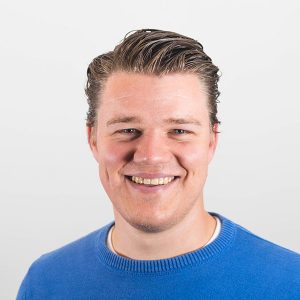Our series about entrepreneurs bringing positive change to their communities continues. Qurein Biewenga is an IB Diploma Programme (DP) graduate of the International School Het Rijnlands Lyceum Oegstgeest, Netherlands.

Is predicting the future possible? The question itself becomes a moot point, if you can look around and find the tools and technologies you need right in front of you to change the present. South African born Qurein Biewenga is one of five co-founders of the solar car company Lightyear and is now based in the Netherlands. Their team has set out to build the world’s first commercially available solar car.
“If you have an idea or a plan, you have to execute. You have to start.”
Born in Pretoria, Qurein moved to the Netherlands as a teenager and studied electrical engineering at Eindhoven University of Technology. There he met the team that would go on to win the 2013 World Solar Challenge in Australia and later create Lightyear. Today, the company has grown from the five founders to 130 full-time staff working to deliver the first prototype in 2019.
Qurein Biewenga responds to our Q&A below:
When did you and your co-founders know that Lightyear would become a reality?
There are many things that led up to the incorporation of Lightyear. It’s more of a process leading to the point when all the pieces of the puzzle started falling together. I think it was 2011 when our current CEO Lex [Hoefsloot], approached me and said: “listen, I don’t want to continue with my master’s yet, I want to build a solar car. We’re going to participate in Australia—do you want to be an electrical engineer on the team?” So, I said that sounds like a good idea, it sounds like a challenge, let’s do it.

But at that moment, you’re not quite thinking things through. You just start, and things roll from there, there’s a snowball effect. We recruited a team and we built the cars [for Australia]—then we all split and continued on to our master’s studies. Because we saw one another quite often, we would always think about the future and what we wanted to do with our careers.
The one thing that really struck us, when we completed the first cars—a lot of companies and events and sponsors requested that we come and display the car. All of this publicity always came with the question: “So, when can I buy one?”
But these are racing cars, built for winning the world solar challenge and they have one purpose and one purpose only, to prove to the world that solar cars can actually work if you optimize them perfectly— they were never designed for appealing to the public. So [in response], we would always say: “yes, yes, we hope the automotive industry will take it up and build these cars for you.”
What happened to interest in the car after the Australia event?
Six years went by and—to our frustration—the automotive industry did not show any interests at all.
I think if you have the email address or telephone number for Elon Musk, you can ask him this same question. The automotive industry does not have the interest or motivation to become more sustainable and produce cars that are actually good for the environment, because they are reliant on fossil fuels. Tesla started in 2003 and by 2006 they already had the Roadster on the road and only now, maybe 12, 13 years later, is the automotive industry actually making electric cars—so that’s the frustration from our side.
I wish we had Elon’s phone number, but we will certainly send him a tweet for comment! Continue …
We thought [in Australia], we had proved to the world that this [solar vehicle] is going to work, we removed all the technological obstacles, and nothing happened. All these people that visited and talked to us, asking, so when can I buy one?—this was always in the back of my mind.
Eventually we all got together, the five co-founders of Lightyear, every evening on a Thursday for about half a year to calculate all of the possible business ideas and how to make a sustainable impact on the world; discussing everything from container ships to banana exports—but we realized that if we want to make a difference in this world with the skillsets and backgrounds that we have—we could start our own company and launch the first commercial solar vehicle. And that is where Lightyear was born.
What is the most important business lesson you’ve learned in the past three years?
I think one of the biggest lessons would be: no entrepreneur actually knows the future—the future is uncertain. If you have an idea or a plan, you have to execute. You have to start.
The first step is the most important. And after you’ve taken that step, the next step is the most important. Just keep your mission in mind and then go for it. Your new customers, investors, employees—even your children, if you have them—have expectations and ideas of how you should be running your business. Keep those people involved—make sure you listen, but it doesn’t mean you have to follow their advice and do everything they say. Eventually if you start your own company, you are in control (at least you should make sure you are in control!) Make sure everything is going ok, and that brings success.
And of course, fail fast. Move on to the next success. Make sure you don’t linger in the past—it would be impossible to be successful. But, the biggest lesson is that the world is uncertain. You’re never going to get certainty and if you want to make an impact—you have to make small steps every day.
One more thing—never do it alone. You have to have a sanity check, really.
What qualities do you admire or look up to among successful entrepreneurs?
For me it would refer to my answer in the previous question, about going for it. The qualities I admire in successful entrepreneurs are the ones that actually have a vision, actually execute. No matter what, stand by what they say—lead not only their company but society as a whole … the ones we can look up to are the ones that can change the world by doing what they’re doing, making people follow them and becoming an inspiration.
We have to ask on last question, of course, has an IB education supported your career?
Because I did the IB [diploma] there were two things that supported me most: first, the interpersonal character of your school mates. We had friends from Russia, from Iran, from Australia, New Zealand, America, England and South Africa. That’s all five corners of the world in one classroom—that inspired me to understand that the world is very very small, but also a big place.
The world is bigger than your country, that is very important to understand if you’re going to make an impact on the world. Understand that there are people with challenges beyond your borders. That’s one side, and of course the other side is how small the world is. As a student, your network actually extends—at the age of 17 or 18—to people that come from other sides of the world and see it through a different glass.
One particular person that made a big impact on me was my physics teacher—first, he looks like Einstein, he truly does—he taught us all the physics stuff, but the most interesting for me was the experiments. He encouraged me to learn about electronics and eventually do a study [in the same subject] and join the solar team. So, one thing led to another and here I find myself having started a tech company—and it all began in physics class.
Qurein Biewenga is one of five co-founders of the solar car company Lightyear, based in the Netherlands. To hear more from Diploma Programme (DP) graduates read these IB programme stories. Share your IB story by writing to alumni.relations@ibo.org.
More stories from this series about social entrepreneurship:



